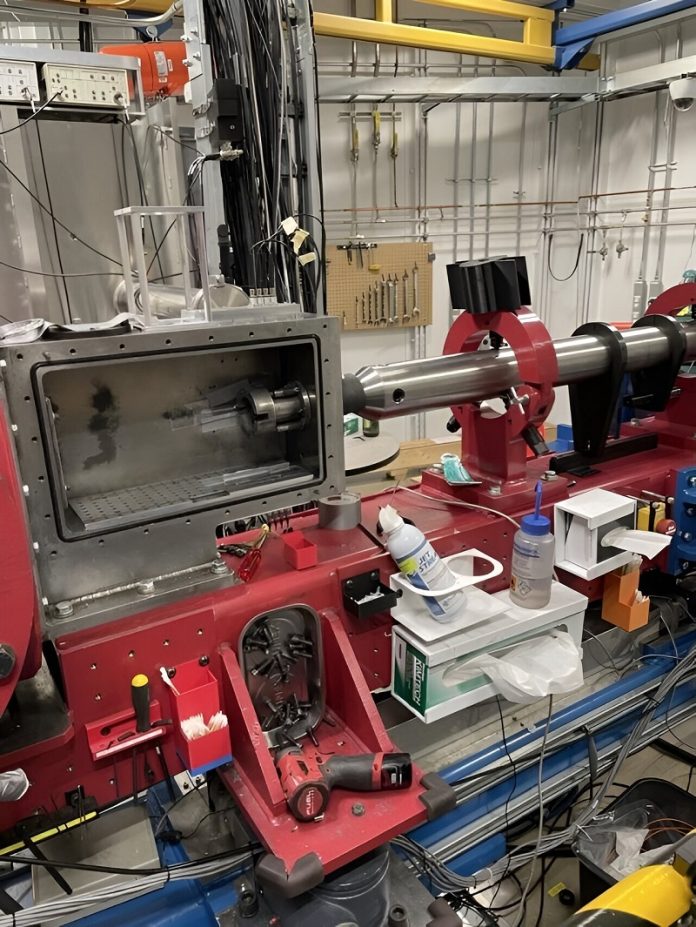
Engineers at Johns Hopkins University have made exciting discoveries about how materials like sand and rock behave when hit by extreme forces.
This research could one day help protect our planet from dangerous asteroids.
Led by Ryan Hurley, an associate professor of mechanical engineering, the team used advanced experimental techniques and computer simulations to study what happens when these granular materials are struck at high speeds.
Their findings, published in the Journal of the Mechanics and Physics of Solids, challenge the traditional understanding of how materials react under such impacts.
“Our study shows that different parts of a material, and even individual grains of sand, can behave in very different ways during the same impact,” said Hurley.
“These findings could have implications for various applications, from deflecting asteroids to improving industrial processes like making tablets.”
To explore these behaviors, the team fired projectiles from a gas gun at speeds as high as 2 kilometers per second (about 4,500 miles per hour) into samples made of aluminum and soda lime glass.
These experiments were conducted at the Advanced Photon Source (APS) in Chicago because they required special X-ray technology to observe what happens beneath the surface of the materials during impact.
“Imagine you’re at the beach—you can only see the sand on the surface,” explained Sohanjit Ghosh, a Ph.D. student and the lead author of the paper. “But with an X-ray, we can see what’s happening underneath.” The team combined these X-ray images with computer models to create a three-dimensional view of the impact, allowing them to see how the materials behaved in both time and space.
One of the most interesting discoveries was how different materials reacted to the intense forces. When the projectiles hit the samples, the heat generated by the compression caused the grains to fracture, melt, and then re-solidify. “We found that at higher velocities, there’s so much thermal energy that the grains actually melt and then reform,” Ghosh said.
Different materials also showed unique ways of handling the energy from the impacts. For example, aluminum, which is more malleable, absorbed energy by creating defects and becoming plastically deformed. In contrast, soda lime glass, which is more brittle, dissipated energy by breaking apart and fragmenting.
These insights could be crucial for future space missions aimed at protecting Earth from asteroids. For example, NASA’s 2022 DART mission successfully changed an asteroid’s trajectory by crashing a spacecraft into it.
Ghosh noted that asteroids have a layer of loose material called regolith on their surfaces, which absorbs a lot of the impact energy when struck. By understanding how different materials behave in these conditions, scientists can better predict and prepare for such missions.
Despite the months of planning required for these experiments, the actual events occur in just a few microseconds. “The timescales are very short—several hundred nanoseconds,” Ghosh said. “We prepare an entire experiment for a month, and then it’s over in the blink of an eye.”
This groundbreaking research not only helps us understand how to protect our planet but also opens new possibilities in various fields where understanding the behavior of materials under extreme conditions is critical.



